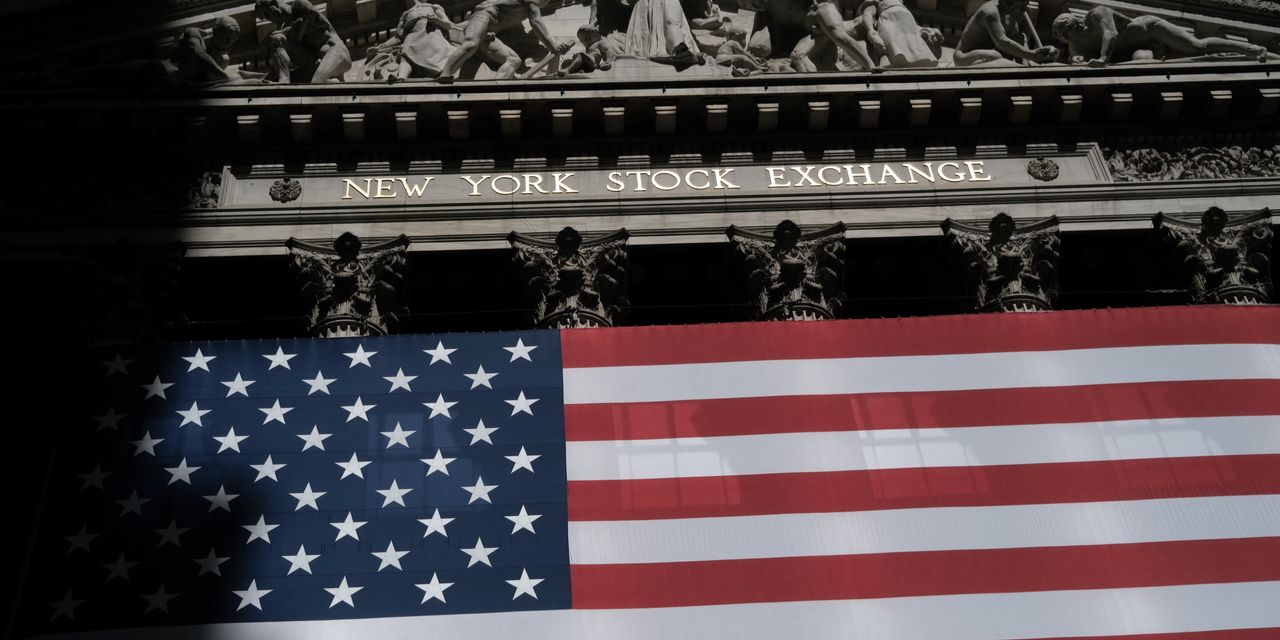U.S. stock futures on Monday pulled back from six-week highs as traders eyed the Federal Reserve’s midweek decision on interest rates.
How are stock-index futures trading
-
S&P 500 futures
ES00,
-0.50%
dipped 19 points, or 0.5%, to 3893 -
Dow Jones Industrial Average futures
YM00,
-0.44%
fell 117 points, or 0.4%, to 32779 -
Nasdaq 100 futures
NQ00,
-0.68%
eased 72 points, or 0.6%, to 13515
On Friday, the Dow Jones Industrial Average
DJIA,
rose 829 points, or 2.59%, to 32862, the S&P 500
SPX,
increased 94 points, or 2.46%, to 3901, and the Nasdaq Composite
COMP,
gained 310 points, or 2.87%, to 11102.1%.
What’s driving markets
Stocks looked set to pare some of their recent sharp gains as a more cautious tone took hold ahead of the Federal Reserve’s monetary policy meeting concluding on Wednesday.
The Dow Jones Industrial Average closed Friday’s session up 14.4% so far in October, in line for its best month since January 1976, and its best October ever, after investors rushed back into the market following the late summer sell-off.
“Last week, there were plenty of reasons for stocks to sell off hard: market stalwarts like Alphabet
GOOG,
Amazon
AMZN,
and Meta Platforms
META,
disappointed and sold off double-digits; September PCE, Fed’s preferred inflation measure, came in at 5.15%, up from 4.89% in August; and China instituted further lockdowns,” said Tom Lee, head of research at Fundstrat.
“Yet, the S&P 500 managed to gain 4% for the week, bringing total gains to 12% in two weeks. The most interesting takeaway, in our view, is that consensus has become even more negative in the face of the market gains,” Lee added.
John Butters, senior earnings analyst at Factset, noted that with just over half of S&P 500 companies having reported third quarter 2022 results, the blended earnings growth rate for the index so far was 2.2%, the lowest such rate since the -5.7% seen in Q3 2020.
Still, the market reaction suggests that though earnings may not be great relative to previous quarters, they’ve been better than many investors feared, with 71% of companies delivering a positive earnings per share surprise and 68% a positive revenue surprise.
Also helping support sentiment are hopes the Federal Reserve may be nearing the peak of its hawkishness. The central bank’s Federal Open Market Committee (FOMC) is expected to increase borrowing costs by another 75 basis points on Wednesday, but the market reckons the pace of rate hikes will slow after that.
Stephen Innes, managing partner at SPI Asset Management, sees the outcome of the Fed meeting as crucial for the market into the year end.
“The next 200 points in the [S&P 500] comes down to the FOMC press conference this week. A tip to slowing the pace of hikes to allow lagged effects of recent hikes to set in will take [the index] to 4100 by the end of the week, aided in part by CTAs, underweight positioning, and the election,” Innes said in an email.
“On the other hand, a hawkish tone fuelled by unrelenting high inflation prints and continued strength in the jobs market would see SPX take a quick nose-dive toward 3700, reversing last week’s 4% rally and then some, bringing an end to what appears to be an early Christmas rally,” he warned.
Meanwhile, pressuring the market mood was news that China’s factory and services activity contracted in October. Fears of softer demand from the world’s second biggest economy pulled copper
HG00,
down 1% to $3.394 a pound as crude oil
CL.1,
lost 0.5% to $87.40 a barrel. The Hang Seng China Enterprises index
160462,
hit its lowest level since 2008.
Wheat futures
W00,
jumped 5.8% to $8.78 per bushel after Russia withdrew from the U.N. deal allowing safe passage of grain from Ukraine’s southern ports.
